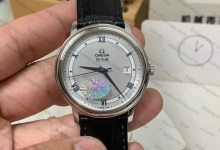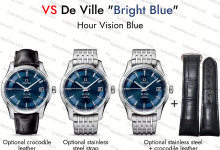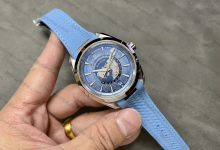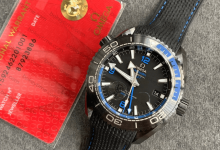Hello everyone, this is Bokey Watch Industry. If you like Omega watches, you must be quite familiar with their movements. Many watch enthusiasts often ask us about the differences between Omega’s 8500, 8800, and 8900 movements, and which one to choose.
First of all, let’s look at the following configuration table to compare the differences among the three movements:
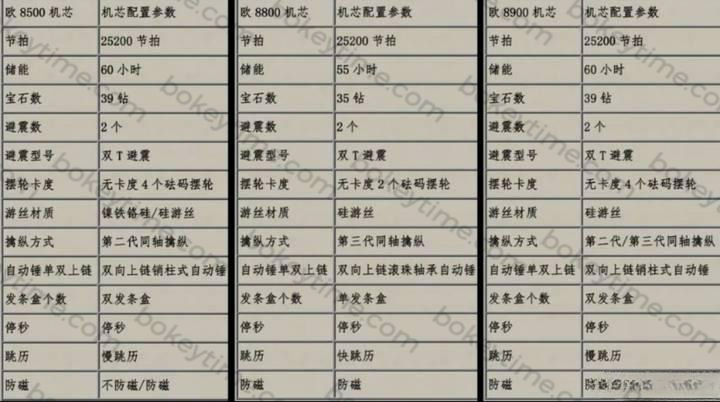
From the table, we can see that the most obvious upgrade of Omega’s 8500 movement compared to the 8900 movement is the improvement in anti-magnetism, which is due to the silicon hairspring. However, this is not entirely accurate, because what you may not know is that the 8500 movement has many versions. This movement was launched by Omega in 2007. At that time, although it had a free-sprung balance, it did not use a silicon hairspring. The balance arms were engraved with only the Omega logo and no “Si14” marking, so it can also be called the 8500A movement.
It was not until around 2011 that the 8500B movement was launched. The difference is that it was equipped with a silicon hairspring, and the balance arms had the “Si14” marking. However, both still featured the second-generation co-axial escapement. As shown in the following pictures:
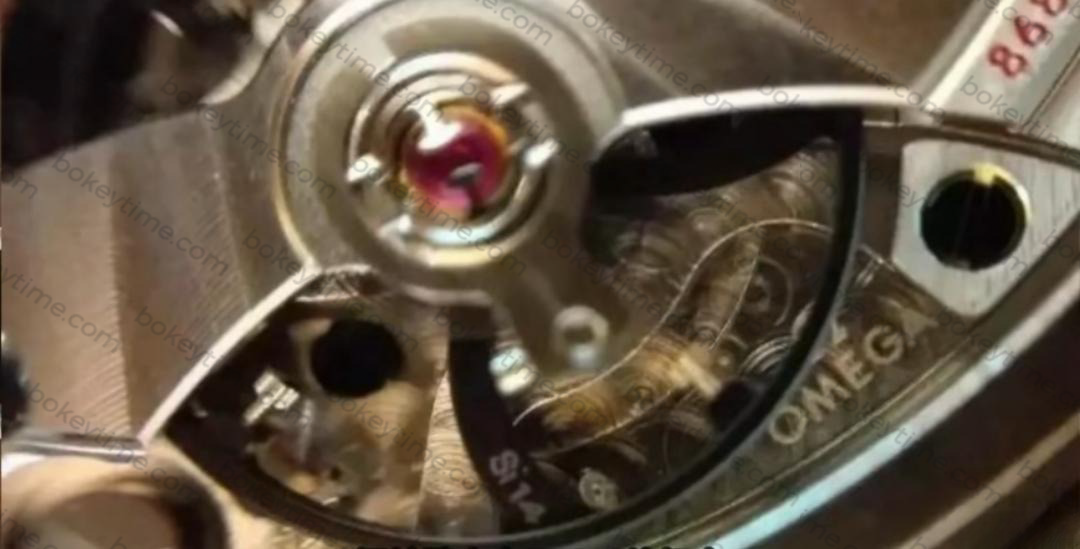
The first-generation co-axial escapement was initially equipped in the 2500 movement, which was prone to sudden stoppages. This was caused by the diffusion of lubricating oil from the automatic rotor bearing, which contaminated the escapement.
Subsequently, Omega launched the 8500G movement in 2013. This marked a uniquely drastic reform by Omega in terms of anti-magnetism. All ferromagnetic components in the movement were replaced with anti-magnetic materials, resulting in the so-called renowned 15,000-gauss anti-magnetic movement. However, you will find that even with a 15,000-gauss anti-magnetic movement, it is still normal for it to have some magnetic properties.
By now, everyone should have a basic understanding of the 8500 movement. Initially, it did not have a silicon hairspring, which can be identified by the absence of “Si14” on the balance wheel. Later, it was equipped with a silicon hairspring, indicated by the presence of “Si14” on the balance wheel. Then, it gained 15,000-gauss anti-magnetic capability, which can be recognized by the engravings on the movement’s automatic rotor.
Next, Omega introduced the 8900 movement in 2015. In fact, there is not much difference between the 8900 movement and the 8500G movement; both have 15,000-gauss anti-magnetism and look basically the same. This is actually Omega’s attempt to redefine a new movement series to differentiate people’s perception. Of course, it was not simply to deceive everyone. After all, the movement was later upgraded from the original second-generation co-axial escapement to the third-generation co-axial escapement.
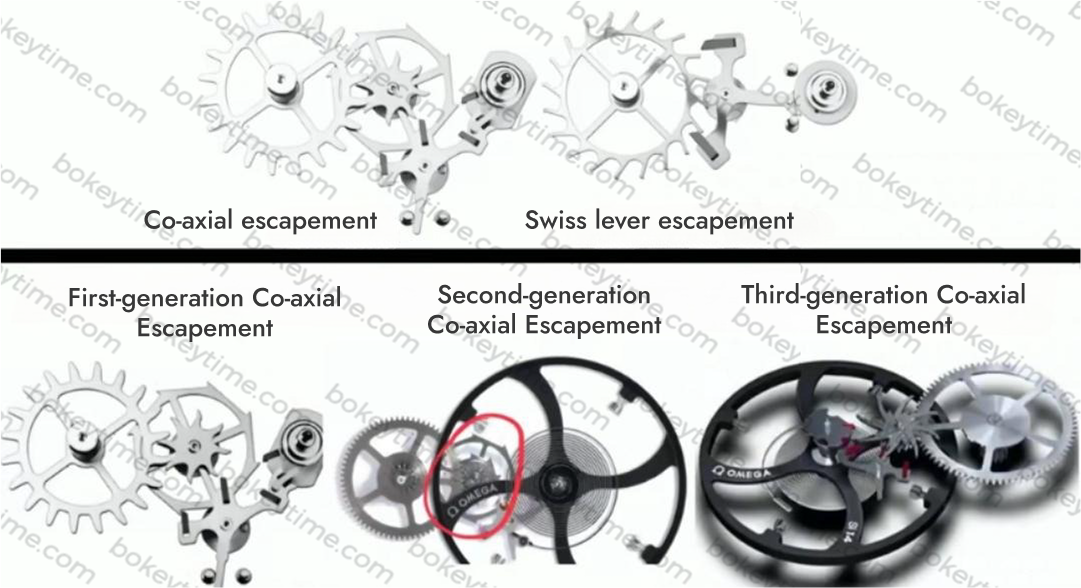
So, what’s the story with the 8800 movement? The 8800 movement is currently Omega’s latest flagship entry-level movement. Its significance lies in its smaller size, which allows it to be used in some men’s watches with slightly smaller case dimensions.
Why then is the 8800 movement used in a relatively large watch like the Seamaster 300? There are only three areas where Omega’s 8800 movement has been downsized: first, the power reserve, which is understandable given it has only a single mainspring barrel; second, the balance wheel has only two weights; third, the automatic rotor has been changed from the previously quiet pin-type rotor to a ball-bearing rotor. However, right from its inception, this movement has been equipped with the third-generation “octopus” co-axial escapement and 15,000-gauss anti-magnetism. Would you say it’s inferior to movements like the 8500A and 8500B? Or is it slightly less capable than the 8500G? Whether multiple balance weights are more important or the octopus escapement is, that’s a matter of personal opinion.
